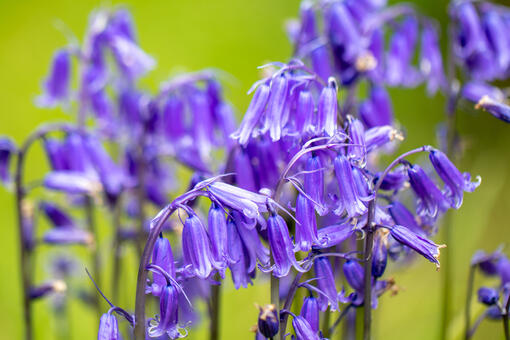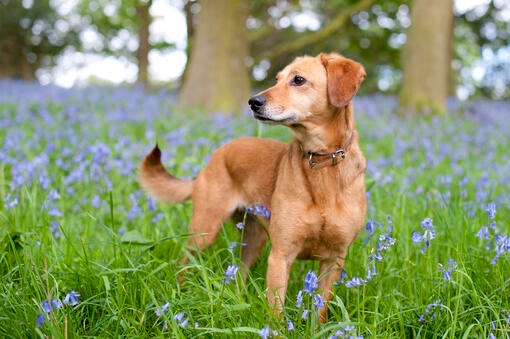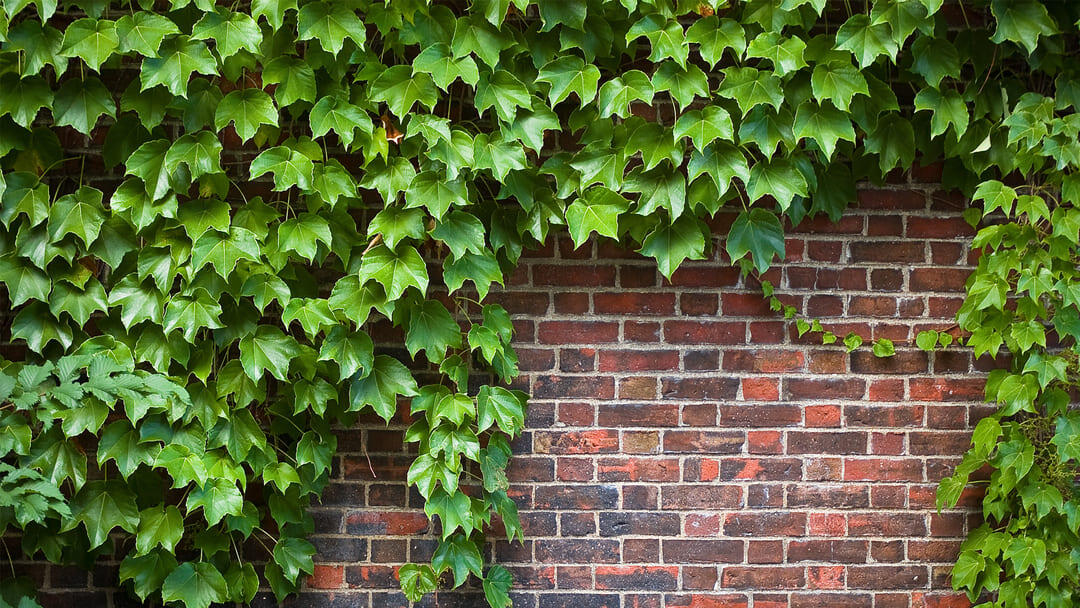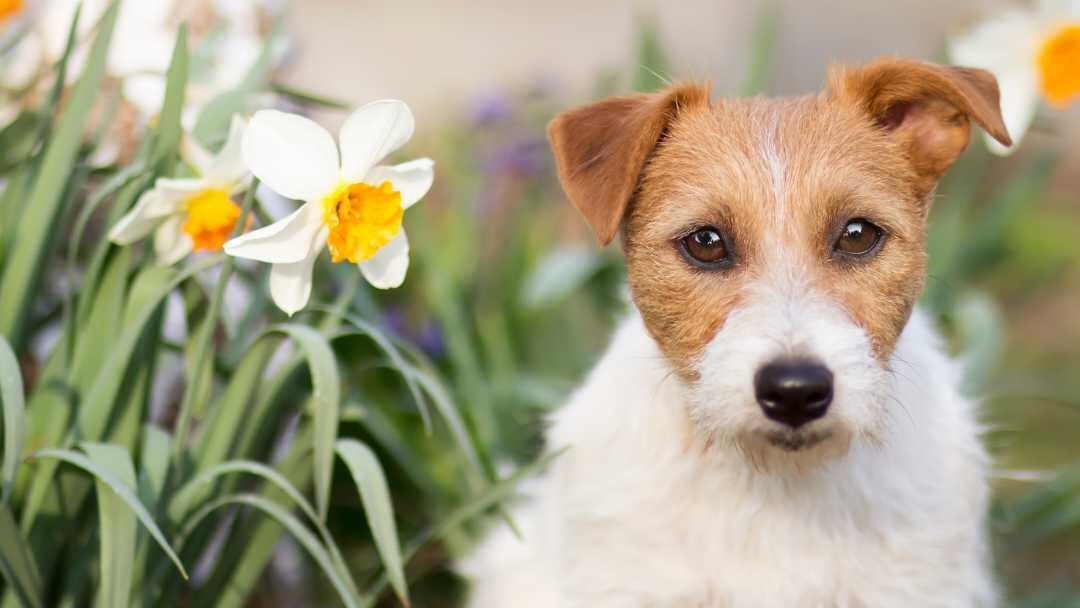
Springtime is all about new outdoor adventures as the gloomy winter weather gives way to longer days and glorious sunshine. But while our pooches have fun exploring every green patch they can find in gardens and parks, owners might be wondering how safe is it for their pets to make acquaintance with every plant under the sun. Colourful spring flowers are wonderful, but are they just harmless beauties, or might they pose a danger for overly curious dogs?
In this article, we’re answering the question ‘are bluebells poisonous to dogs’, so you can make sure your pet doesn’t get into too much trouble while admiring these beautiful spring flowers.
How to identify bluebells?
Fortunately, bluebells are some of the easiest flowers to recognise when out and about with your dog. They usually come in a deep-blue colour, with tubular-bell flowers dropping to one side of the stem and very thin, narrow leaves. They’re accompanied by a very lovely, sweet smell. Chances are you’ll encounter them on woodland walks, particularly during April and May.
Are bluebells poisonous to dogs?
Yes, bluebells are poisonous to dogs. Unfortunately, as pretty as they are, bluebells pose a big risk for our pets due to a toxic chemical present in the plant called glycoside. This means every part of the flower can lead to health problems when consumed by dogs. If you suspect your dog is suffering from bluebell poisoning, contact the vet immediately.
Which type of bluebells are poisonous to dogs?
All bluebell varieties, including native, Spanish and hybrid bluebells, are considered toxic for dogs. Although bluebells are usually blue, you might come across a range of other colours such as white, pink and even grey bluebells. These plants are also poisonous to dogs and you shouldn’t allow your pet to sniff them, as irresistible as these breath-taking flowers might be.
Signs of bluebell poisoning in dogs
If you suspect your dog has gotten too close to bluebells on the daily walk, monitor them closely in the next few hours in case any unusual signs show up. The most common symptoms of bluebell poisoning include:
- Diarrhoea
- Vomiting
- Abdominal pain
- Drooling
- Trembling
- Reduced heart rate
- Lethargy
Even skin irritation can be a side effect if your dog has mingled with the flowers, so look out for any abnormal rashes too. For more information on skin allergies in dogs, check out our easy guide.
If you notice any of these symptoms, don’t hesitate to call your vet.
What to do if your dog has eaten bluebell flowers?
The first thing to do is call the vet immediately and follow their advice. They might recommend waiting to see if there are any unusual symptoms before intervening, but sometimes the vet might suggest inducing vomiting to get the toxic elements out of their system. They could also recommend giving your dog a bowl of milk to drink. For more severe reactions, you will be instructed to get the dog to the vet straightaway.
It's always a good idea to take a picture of the flowers your dog has been in contact with and show it to your vet. This will make it easier for them to identify the risk the ingested plant poses to your dog’s health and will help them offer the most effective treatment.
How to keep dogs away from bluebells?
As worrying as the side effects of bluebell poisoning are, the good news is that many dogs will instinctively avoid them. However, puppies, in their endless quest to explore the world, are more at risk of getting too close to these flowers. Here is how to keep dogs of all ages away from bluebells:
- Don’t let your dog stray too far away from you on their walk, so you can pay attention to the plants they’re interacting with.
- Train your dog so they have a good response to the ‘leave it’ command. Check out our basic dog training article for step-by-step instructions.
- Consider using a leash if your dog gets too excited around flowers. Here is how to teach your puppy to walk on a lead.
- If you have bluebells in your garden, consider replacing them or installing a fence around them so they’re out of reach for your dog.
- If you have bluebells in your house, move the vase to a higher shelf so the pup doesn’t have access to them.
In conclusion, bluebells are poisonous to dogs and you should keep an eye on your dog when out and about to make sure they’re not tempted by a bluebell flower snack on their daily walk.
Wondering about other flowers and their side effects on your pet? Find out if other springtime favourites such as daffodils are also poisonous to dogs, next.










